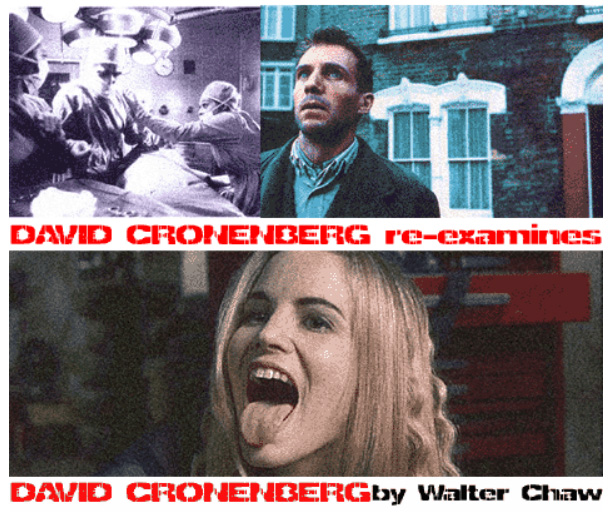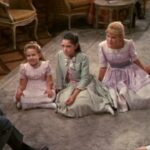**½/**** Image A- Sound A Extras B
starring Tomisaburo Wakayama, Masahiro Tomikawa, Kayo Matsuo, Minoru Ohki
screenplay by Kazuo Koike, Robert Houston & David Weisman
directed by Robert Houston and Kenji Misumi
by Travis Mackenzie Hoover Timing is everything when it comes to certain movies. Had I been one of the many who paid to see Shogun Assassin in 1980 or thrilled to it on video for years afterward, I might, too, have a cult attachment to its slick camerawork and delightfully bloodthirsty nature. But as it turns out, I saw the films from which it was culled–the Lone Wolf and Cub epics Sword of Vengeance and Baby Cart at the River Styx–first: no matter how expertly distilled is Robert Houston's scratch remix version, it was never going to match the elegance of construction of those Kenji Misumi classics. If you find yourself in a hurry and can only squeeze in one film with a pudgy ronin and his small, indestructible son, then Shogun Assassin is the one you want; and it immediately gains half a star if you aren't familiar with the originals. But for those with time, patience, and a love of arterial spray, the main event is probably the better bet. Which is not to say that Shogun Assassin is without its virtues.
For the uninitiated, Lone Wolf is ex-court executioner Itto Ogami (perpetually sour-faced Tomisaburo Wakayama), who is double-crossed by the shogun, loses his wife, and then wanders the earth with toddler son/cub Daigoro (Masahiro Tomikawa). There's not much to his story beyond his unnatural skill with a sword and eternal hatred for the shogun (actually the Yagyu clan, but simplified for westerners). Mostly the film is devoted to his dealing with a gang of female ninja and their clever manners of concealment, as well as the Masters of Death, the shogun's top killers, outfitted with gimmicky weapons for dealing out suffering. Plot, of course, takes a back seat to some really creative bloodletting courtesy Ogami and his tot's weapons-laden pushcart.
Despite the potentially scissor-hack nature of consolidating two films into one, Houston has done a surprisingly respectful job. He even rings a new bell with reliance on Daigoro's narration: where the full-length series films were largely ruled by Ogami and his profound distaste for humanity, the narration introduces the element of his son ruminating on their path to savagery–and with the creepy child they employ as voice talent, not only does it play better than you expect, it's also remarkably clever in execution. Instead of merely cutting to the nonverbal child after a bout of violence, Shogun Assassin becomes about the son's defilement through acceptance of violence, and it makes things more piquant. This is an element that Tarantino noted when he made the film the favourite of The Bride's young daughter in Kill Bill, Vol. 2.
Still, there's a certain awkwardness that was bound to emerge from shoehorning two movies into one. While Shogun Assassin is largely comprised of the second film, Baby Cart at the River Styx, the softening of the origin story is impossible to ignore, to say nothing of losing the shock intro to the series, where a child lord is led down an impossibly long length to an unpleasant fate. The violent set-pieces remain intact, of course, and it's all well-shot in Misumi's luxuriant colour (the better to capture the spurting neck of a recently-beheaded sucker). The compactness of the series (and its attendant structures), however, is actually damaged by the revamp–which perhaps won't be appreciable to those who don't know the originals, yet can't help but leave us fans with a sense of "why bother?"
Credit where credit is due, though: this introduction of Lone Wolf and Cub to the American market is a great deal more palatable than it has any right to be. If nothing else, Shogun Assassin makes you understand how special it must have seemed well before the term "Asia Extreme" came into vogue, and how it created the legion of fans that it did. I'd prefer you check out the originals (currently represented by a nice box set from AnimEigo), but this READER'S DIGEST Condensed Bloodletting sure does the trick for those with only a casual interest in '70s samurai epics–or anyone else looking to see tempera-paint blood spew in great satisfying gouts.
THE DVDAnimEigo takes its usual care in reissuing the film on DVD. The 2.35:1, 16×9-enhanced image is quite lustrous, although it ticks up the saturation a bit overzealously; occasional greenish blacks are also a (minor) problem. In the presentation's favour, save for two untraceable bits of stock footage (helpfully labelled besides), they've cleaned up the source print in spectacular fashion. The Dolby 2.0 stereo sound is a little soft, perhaps, but it's well-articulated for an English dub of such clearly limited means. As for extras, some extremely detailed program notes annotate the alterations to the two Lone Wolf and Cub films while offering other background information that goes above and beyond the call of duty. A second barrage of text provides "Daigoro's History Lesson," giving greater historical understanding of the period of Japanese history dealt with in the film. Lastly, a restoration gallery provides before-and-after illustrations for twenty pulled frames from the film. Trailers for Sword of Vengeance, Lady Snowblood, and Demon Spies round things out.
85 minutes; R; 2.35:1 (16×9-enhanced); English DD 2.0 (Stereo); DVD-5; Region One; AnimEigo






![The Bodyguard (1992) [Special Edition] - DVD|Blu-ray Disc The_Bodyguard1](https://filmfreakcentral.net/wp-content/uploads/2012/05/The_Bodyguard1-150x150.png)
